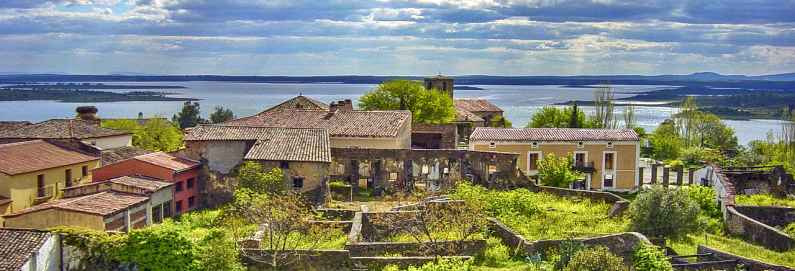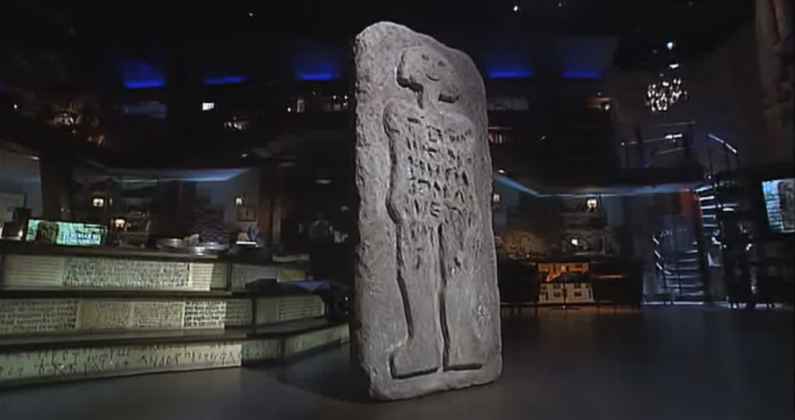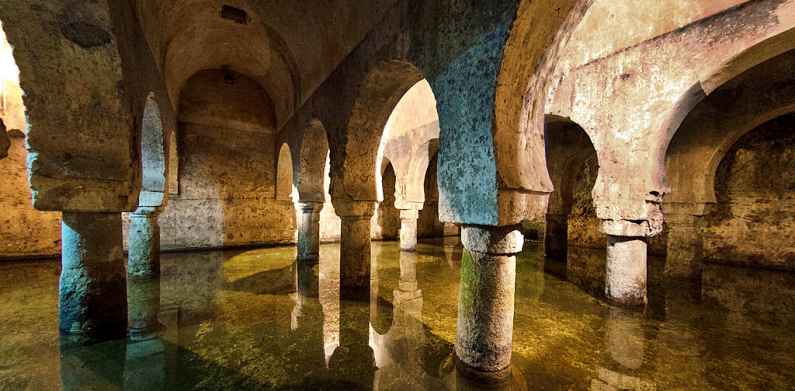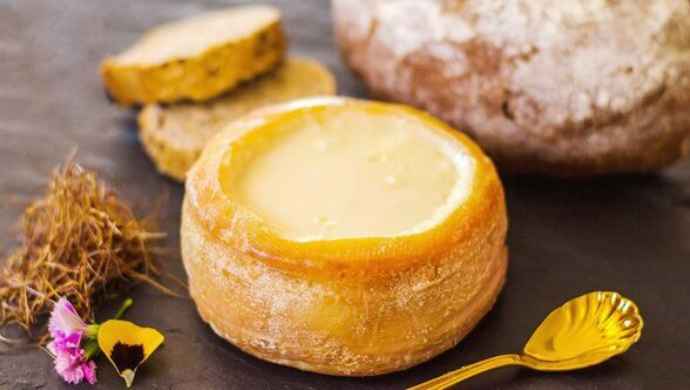|
Return
to Travel Guide / Home
Page / Extremadura Guide

Located Extremadura in western Spain, the city of Caceres is home to a mixture of Roman, Moorish, Gothic and Renaissance influences. The city was originally founded by the ancient Romans and retains many features of its historic past.
Caceres’s old town, Ciudad Monumental is a fascinating place to explore with its narrow, cobbled streets, while the city is encircled by Moorish defence walls from the 12th century.
The city also boasts around 30 towers, many of which are occupied by nesting storks. Caceres also features fascinating art galleries and museums to explore, including the Helga De Alvear Museum Of Contemporary Art.
However, the city also has an unusual side.
Here we list five fascinating locations to visit in Caceres, Spain this year.
1. The 'Astronaut' of Casar, Plaza de las Veletas, 1, Caceres
Ancient Aliens fans will enjoy this one. This strange, granite stele was originally embedded in a wall at the local cemetery in the village of Casar, just outside Caceres. It was a tradition for the villagers to cross themselves when passing in front of the ancient stone, while children threw stones at the eerie image carved on its face.
The stele features a creature with a misshapen, oversized head and bulbous shoulders and has an unnerving smile on its face.
 Image
angel sanguino/YouTube Image
angel sanguino/YouTube
It was originally believed that this funerary stele dates back to Roman times or earlier. Many scholars believe the carving represents a Celtiberian warrior from around the 2nd or 1st century BC. The stele bears a strange inscription engraved within the body of the figure, which was written in Latin characters but is untranslatable.
However, the mysterious figure, which is now on display at the Archaeological Museum of Caceres, features an ancient alien. The stone has been nicknamed the “Astronaut of Casar” or the “Alien of Casar,” due to the fact that it appears to represent a person wearing spacesuit and helmet, or even an extraterrestrial being.
2. Moorish Cistern of Caceres, Plaza de las Veletas, 1
The Palacio de las Veletas was built in the 15th century and is now home to the Museum of Caceres, with its exhibits relating to art and archaeology, and, of course, the Astronaut of Casar mentioned above.
 Photo by Ángel M. Felicísimo/Wikimedia Commons Photo by Ángel M. Felicísimo/Wikimedia Commons
However, before the building was converted into a palace, the historic building was a Moorish citadel, built during the Almohad dynasty. These days, all that remains of the ancient fortress is a spectacular Arabic “aljibe,” or water cistern, which still lies beneath the museum.
The Cistern of Caceres is one of the largest and best-preserved water tanks on the Iberian Peninsula. It measure 45 feet in length and is 32 feet wide and was constructed using recycled materials from ancient Roman and Visigoth structures in the city. BR
The cistern has been preserved as, after the reconquest of Spain, the Catholic Kings ordered the demolition of the Arabic citadel, but found the cistern handy for storing fresh water underneath the palace for the local population.
3. Museo del Queso, Casar de Cáceres, Spain
Spain is rightfully famous for its food museums, celebrating wine, honey and chocolate. Caceres has a museum dedicated to cheese. Not just any cheese, however, as the museum celebrates just one special cheese that the region is famed for.

Located in the village of Casar de Caceres, the museum celebrates the regional speciality Torta del Casar, which dates back centuries. The tasty cheese originated when shepherds realised that the cardo, a purple, thistle type flower lining their paths could coagulate their sheep’s milk into cheese. The thistle is a relative of the artichoke and gives the slowly-aged cheese a subtle bitter flavor. The cheese has an unusually soft, semi-liquid center and is today made by eight families in the area.
Torta del Casar is such a sacred cheese-making process that the Extremadura government created the Denominacion de Origen del Casar, a regulatory body charged solely with certifying regional Torta and policing imitation cheeses. The cheese is only made from the milk of Merino and Entrefina sheep, which are notorious for giving little milk. It reportedly takes 20 sheep to yield enough milk for 2.2 pounds of cheese.
Enjoy a visit to Caceres in Extremadura, Spain, visiting these fascinating locations and so many more.
Return
to Travel Guide / Home
Page
top
|

